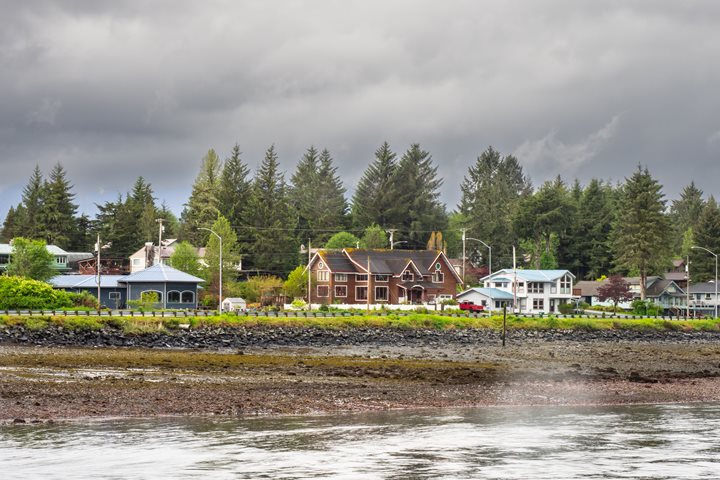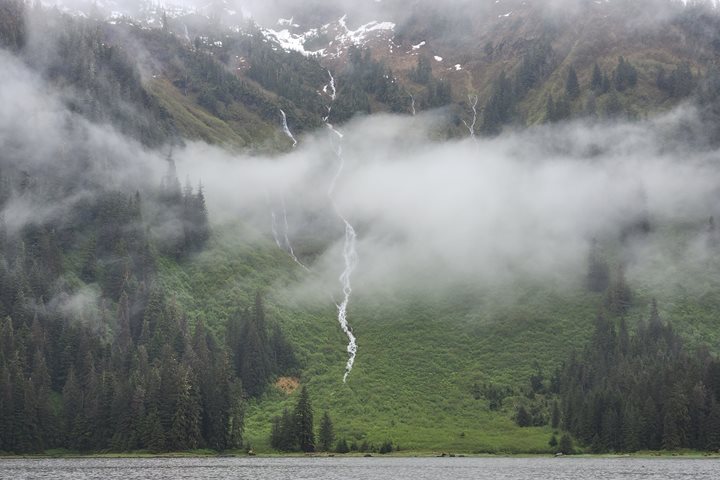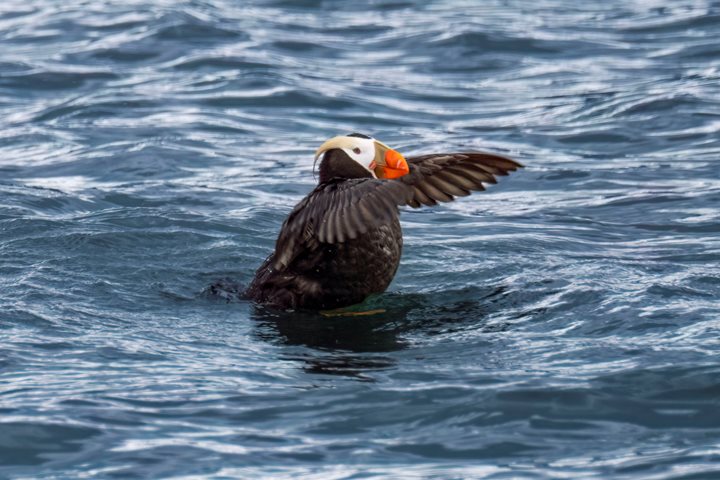National Geographic Sea Bird ventured into Glacier Bay National Park later in the evening of August 25th. We picked up our Ranger, Mary Lou, and Cultural Interpreter, Bertha, in the small town of Gustavus, Alaska and navigated deeper into the national park as the night went on. We awoke in the early morning hours approaching Russel Cut and the Lamplugh Glacier, which appeared very blue on this misty day. It was a sight to behold, but the real treasure was to witness the beautiful dark brown bears that were nestled in the bushes on the hillside. The seals lounged on the icebergs as we passed slowly, moving on in hopes of viewing calving from the John Hopkins Glacier.
Our ranger and cultural interpreter for the day presented us with knowledge of the geological formations of the bay, cultural history, and information about the Tlingit nation whom inhabited this area for thousands of years. They did an excellent job of guiding us along during our journey of exploring Glacier Bay.
As we passed Gloomy Knob we saw two more brown bears grazing and snoozing in the post-lunch hours. Although the weather still proved to be misty, the gloom was proved wrong as we experienced several goats atop the cliffs, a hoary marmot, and an eagle’s nest within view.
Geike rock and Lone Island provided views of sea otters, some even close to the ship; but South Marble Island was a feeding ground for puffins and gulls. As the birds dispersed, the plethora of puffins proved to be the largest amount that most of the spectators had ever seen, numbering 50, at least! Also to be noted, two feisty young sea lions playing “king of the mountain” pushing each other into the sea, each in succession. It was an amazingly captivating day, bountiful in sea life and rich cultural heritage.









